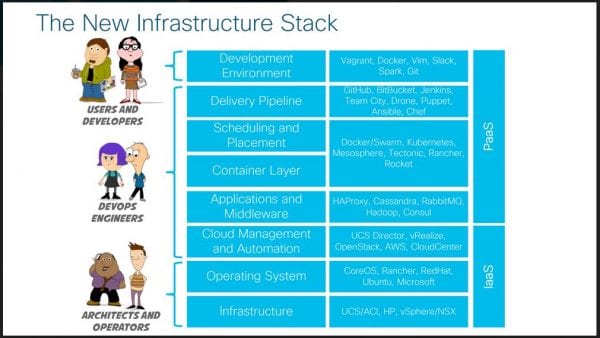Seven Fascinating Things We Heard at WASTC

The National Convergence Technology Center (CTC) recently attended the WASTC Winter ICT Educators conference and gave a breakout presentation on its Business and Industry Leadership Team (BILT) model. Regular blog readers know that the BILT model energizes the relationship between educators and business leaders by encouraging a partnership that allows a better alignment of curriculum with the job skills the workforce needs. The CTC extends a thank you to NetApp’s Mercedes Adams, who was on hand at the presentation and did a fantastic job offering the business perspective of a BILT relationship. Including a member of the CTC’s BILT is always a hit with conference attendees.
Aside from that presentation, CTC staff attended a number of other breakout sessions and keynote addresses. These events are always great ways to get a “big picture” look at the trends and practices in the education and industry landscape. Here’s a sample of some of the more notable things we heard…
- The Internet of Things creates big security concerns. By 2025, Cisco estimates 1 million new devices will be installed onto the internet every hour. But with that shocking market expansion will come increased security concerns because not all of those millions-per-hour of new devices will be secured. Many DDOS attacks now use IoT devices. The presenter put it this way: just as you regularly and digilently update the code on your smartphone, you should also regularly and digilently update the code on your IoT home devices. Few people do this.
- The job market for cybersecurity will continue to expand. No matter the technological innovations, security will always be a concern because of human error: sharing USB drives, clicking open email attachments, improperly securing devices. These are the poor decisions that create vulnerabilities. As of today, one million global cybersecurity jobs are unfilled. If you have a cybersecurity degree, you’ll likely be able to get a job. But this presenter also cautioned that many cybersecurity “experts” out there now simply aren’t properly qualified.
- Programming will become a necessary skill for IT workers. Networking infrastructure needs are different now and IT workers must be ready to adapt if they want to stay employable. Specifically, IT technicians are encouraged to consider learning Python. Python is a “mature” language the industry has accepted. Futher, Python is easy to learn and the language still benefits from frequent updates. Obviously, some industry needs will be different (C++ is useful in manufacturing, other businesses may want Go or Javascript).
- “DevOps” has arrived. One presenter referenced the “cloud gap” – that disconnect between developers and architects/operators. Some of their respective job duties have expanded to fill in that cloud gap, but many tasks still remain that need to be filled and performed. Into that gap comes the DevOps engineer. Hank Preston from Cisco offered this chart to illustrate how DevOps bridges the stack between developers and operators.

- Creating context and relevance is essential when showcasing technology to high school students. Outreach to high school students remains an important part of recruiting, but it’s important to consider carefully how presentations and workshops frame technology concepts. One IT/CS faculty presenter – who’s made over 20 high school visits in just the last few months – believes that students need to know that technology is everywhere; it’s not just laptops and smartphones. She therefore strives to make technology relevant by asking students what they like and then tying those interests back into IT and computer science (for example, discussing wearable tech for those who like fashion).
- A “cultural wealth” model offers a unique approach to appealing to underserved students. The community organization Hack the Hood [http://www.hackthehood.org/] runs regular workshops that teaches low-income young people how to build a website for local small businesses. Among the tools Hack the Hood uses is the cultural wealth strategy that creates an “asset based” perspective that can help foster success by emphasizing strengths the students likely already have. See below for a slide from Hack the Hood’s Chief Education Officer Zakiya Harris. Here also is a summary of the model from Cal State Long Beach and a 2016 article from AACU.

- The CyberPatriot program is a popular, proven, and successful tool for connecting high school students with community college progams. As of today, the CyberPatriot program boasts over 500 five-person teams nationwide. The program’s annual calendar consists of four rounds of competition (each round lasts four hours) for middle school and high school students. The contest teaches help desk skills: Windows desktop and server hardening, Ubuntu and Linux hardening, and Cisco networking concepts. Half of a team’s contest points come from resolving a problem, the other half of the points come from making sure the problems don’t recur. The high-pressure nature of the contest also encourages teamwork and boosts communication skills (i.e. if you don’t work together, you won’t win). Many community college host these competitions at their campus as a way to showcase their facilities to local high schoolers and begin building relationships that can hopefully soon turn into enrollments.
